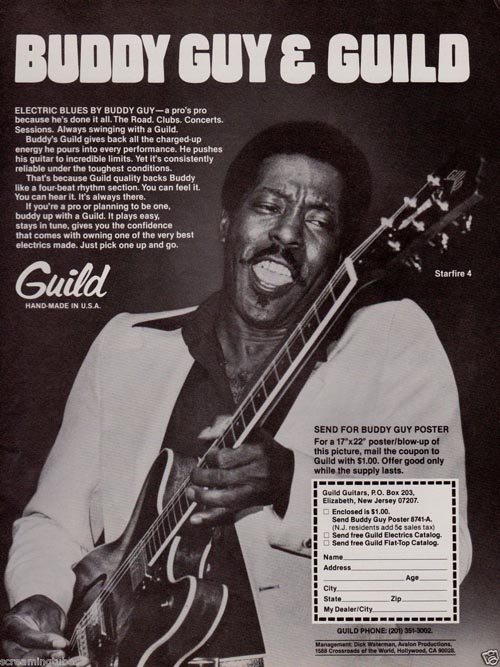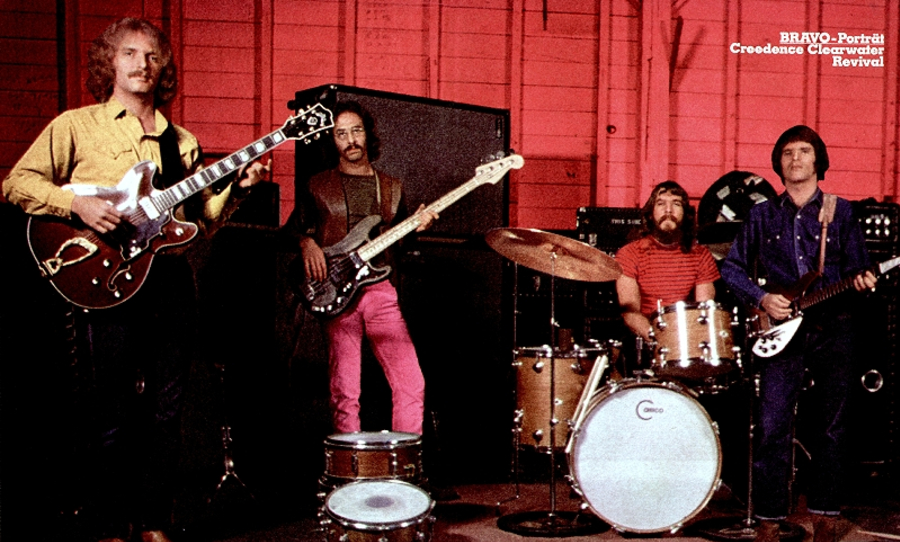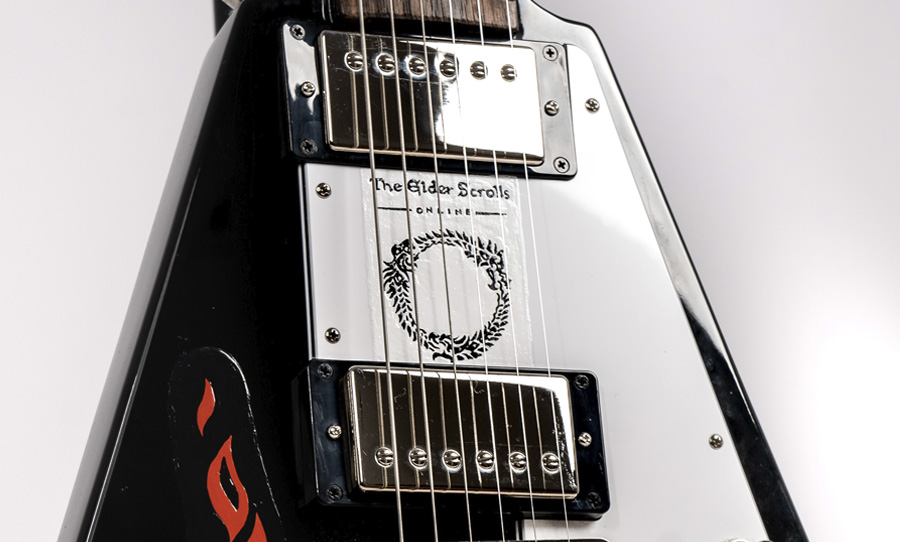Guild is a historic guitar manufacturer that has enjoyed a long-standing reputation for crafting excellent acoustic, electric, and bass guitars. The company was founded in 1952 by Alfred Dronge, a guitarist and music-store owner, and George Mann, a former executive with the Epiphone Guitar Company.
From the New York jazz scene in the 1950s to Richie Havens’ legendary performance at Woodstock, to Kim Thayil of Soundgarden, Guild guitars helped create some of the most memorable musical moments in recent history.
What makes the Guild Starfire truly unique is its ability to take a preexisting design and improve on it. Since its conception, the Starfire has stayed close to the ES-335 design thanks to influence of George Mann. And while the 335 design is an icon in its own right, the Starfire interpretation of this shape has formed its own unique character.
Stay tuned as we delve into how exactly this guitar came to be and the famous players that carried its legacy through the decades. 
The Guild Starfire has transcended the genres as well as the decades. Its sound, design and versatility made it a hidden gem in the world of blues, rock, indie, jazz and more.
Born in the Big Apple
The first Guild guitars were produced 536 Pearl Street in New York City. The company’s initial workforce was made up of former Epiphone employees who lost their jobs following the 1951 strike. Due to Dronge’s love for jazz, the company focused on full-depth hollow body electrics before moving onto flattops and acoustic archtops acoustic throughout the ’50s.
The Guild Starfire made its way onto the scene in 1960. After entering the folk market with their acoustic guitar line they decided to properly focus on the electric market. Accordingly, the Starfire I, II and III semi-hollow range was born and so was the Starfire legacy, which would stretch decades into the future.
The Starfire I had one DeArmond single-coil, 24 3/4″ scale, 20 fret rosewood fingerboard and a cherry finish. The II model was much the same but included two DeArmond pickups instead of one. The Starfire III saw the addition of a Bigsby tremolo as opposed to the simple hardtail pieces of the previous models.
These guitars all had a single-cutaway body style, with a single Florentine cutaway. From 1963 they would be fitted with humbuckers to accommodate musical tastes at the time. The semi-hollow range was followed by the semi-solid (335-style) line of guitars, which are associated with the Starfire style that we’re accustomed to today.
The Starfire IV is perhaps the best known and is held in high regard, especially amongst blues musicians. The IV made its debut in 1963 alongside the V and VI models.
Classic Rock and The Blues
The ’60s is the decade in which Buddy Guy became synonymous with the Starfire IV. The blues legend has the Starfire IV to thank for his characteristic style and tone. Multiple posters and advertisements were created especially during the ’70s that pitched Buddy as the poster boy for the Starfire range. As a result, many attribute this to the Starfire’s status as a blues guitar.
Similarly, another notable player from the era was Tom Fogerty of Creedence Clearwater Revival. The southern rock band reach their peak in popularity around 1970 and all the while, rhythm guitarist Tom Fogerty carried his trusty Starfire III. Tom was also known to use a custom VI in certain situations, that came with a hardtail piece rather than the factory Bigbsy vibrato.
As the company shot into the ’70s Alfred Dronge sadly died in a plane crash in 1972 aged 60. However, the design of the Starfire series would not change until the turn of the century.
The Next Generation
In 1995, after many changes in ownership, Guild was bought out by Fender. After multiple location changes the company released the high-end D-55 and F-50 models in 2009. By 2013 Guild also released the Newark Street collection.
This collection was a series of re-released classic electric Guilds from the 1950s and 1960s, including the Starfire models. It was from the ’90s onwards that the Starfire really started to become more diverse in terms of genre. Indie and alternative rock guitarists from bands like Broken Social Scene, Garbage and Gods Child all wielding a Starfire.
Even today, Clemens Rehbein of Milky Chance uses a vintage ’65 Starfire IV to formulate the band’s unique reggae-folk sound. Similarly, frontman for Gang of Youths David Le’aupepe wrote the bands hit debut album Go Farther in Lightness on his emerald green 2000 Starfire IV ST.
The Starfire has proved itself far beyond the boundaries of blues. From jazz beginnings to rock and reggae stardom the Starfire’s adaptability is unparalleled. Due to its ability to perform in a range of styles, the Starfire has and will continue to influence players for decades to come.


